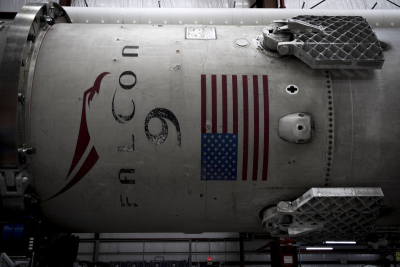Arianespace sales top SpaceX in 2015
The competition heats up: According to Arianespace’s CEO Stephane Israel, the company signed more new launch contracts in 2015 than SpaceX, despite their competitor’s much larger PR footprint.
At a briefing here outlining Evry, France-based Arianespace 2015 record and plans for 2016, Israel sought to portray Arianespace as once again in the driver’s seat when it comes to commercial launches. After drawing even with Hawthorne, California-based SpaceX in 2014, with nine commercial orders each, Arianespace’s count for 2015 showed its Ariane 5 rocket winning 14 contracts for geostationary-orbit satellites, compared to nine for SpaceX and one each for International Launch Services of Reston, Virginia, which markets Russia’s Proton; and for the Atlas 5 rocket of United Launch Alliance of Centennial, Colorado.
Arianespace’s count includes one undisclosed customer. Unless it’s identified, it will not be included in SpaceNews’s annual count of firm contract awards. Of the 13 satellites remaining, two are for Europe’s meteorological satellite organization, Eumetsat, and cannot be considered commercial wins. In addition to the geostationary-satellite contracts, Arianespace in 2015 booked the largest single launch contract, to use 21 Russian Soyuz rockets — including the Europeanized version operated from Europe’s spaceport — to launch the OneWeb low-orbiting broadband constellation.
Israel also spent a lot of time at the briefing dealing with reporters’ questions about SpaceX, where he poo-pooed the significance of the Falcon 9 first stage landing, noting repeatedly the accepted wisdom that the stress of launch limits the re-usability of rocket stages. This suggests that Arianespace’s next generation rocket, Ariane 6, is not likely to have this capability. Considering that its launch price is now estimated to be between $90 and $100 million, I wonder how they will compete with a reusable Falcon 9 that will likely cost a third this price.
That the Russians only signed one new contract for its Proton last year, as noted in the quote above, also tells us that SpaceX is getting most of its market share from the Russians. If the company should continue to lower its costs and increase its launch rate over time, they will then start stealing market share from others. Thus, Arianespace’s CEO makes a very big mistake if he takes their competitive threat lightly.
The competition heats up: According to Arianespace’s CEO Stephane Israel, the company signed more new launch contracts in 2015 than SpaceX, despite their competitor’s much larger PR footprint.
At a briefing here outlining Evry, France-based Arianespace 2015 record and plans for 2016, Israel sought to portray Arianespace as once again in the driver’s seat when it comes to commercial launches. After drawing even with Hawthorne, California-based SpaceX in 2014, with nine commercial orders each, Arianespace’s count for 2015 showed its Ariane 5 rocket winning 14 contracts for geostationary-orbit satellites, compared to nine for SpaceX and one each for International Launch Services of Reston, Virginia, which markets Russia’s Proton; and for the Atlas 5 rocket of United Launch Alliance of Centennial, Colorado.
Arianespace’s count includes one undisclosed customer. Unless it’s identified, it will not be included in SpaceNews’s annual count of firm contract awards. Of the 13 satellites remaining, two are for Europe’s meteorological satellite organization, Eumetsat, and cannot be considered commercial wins. In addition to the geostationary-satellite contracts, Arianespace in 2015 booked the largest single launch contract, to use 21 Russian Soyuz rockets — including the Europeanized version operated from Europe’s spaceport — to launch the OneWeb low-orbiting broadband constellation.
Israel also spent a lot of time at the briefing dealing with reporters’ questions about SpaceX, where he poo-pooed the significance of the Falcon 9 first stage landing, noting repeatedly the accepted wisdom that the stress of launch limits the re-usability of rocket stages. This suggests that Arianespace’s next generation rocket, Ariane 6, is not likely to have this capability. Considering that its launch price is now estimated to be between $90 and $100 million, I wonder how they will compete with a reusable Falcon 9 that will likely cost a third this price.
That the Russians only signed one new contract for its Proton last year, as noted in the quote above, also tells us that SpaceX is getting most of its market share from the Russians. If the company should continue to lower its costs and increase its launch rate over time, they will then start stealing market share from others. Thus, Arianespace’s CEO makes a very big mistake if he takes their competitive threat lightly.

